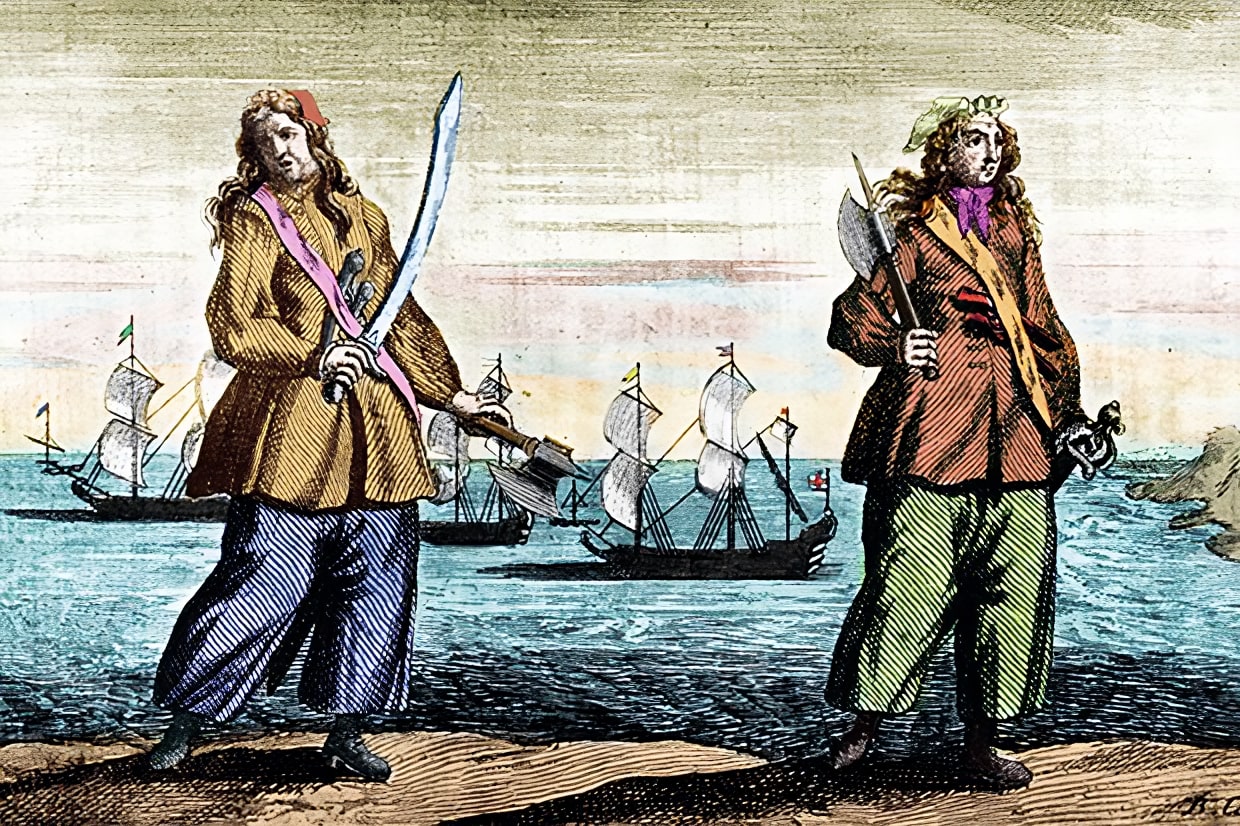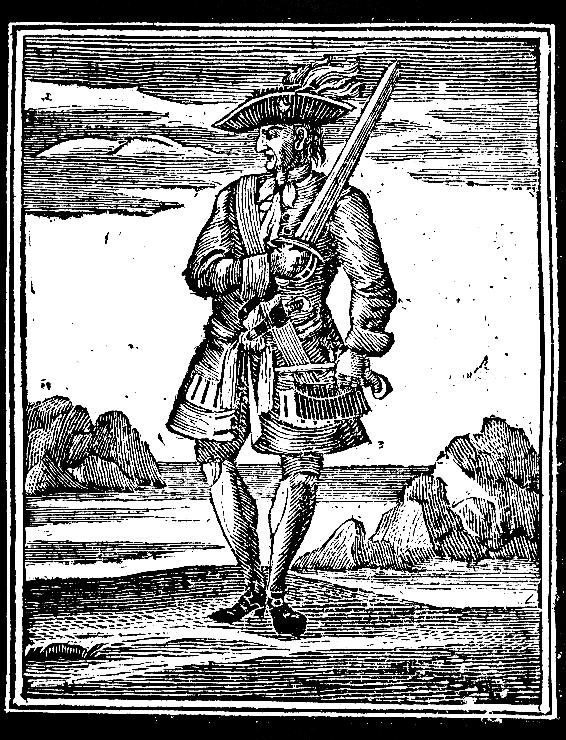Rackham Red, known to Tintin fans as the hero of “The Secret of the Unicorn,” is not a completely fictional character! This pirate, known as Jack Rackham, roamed the seas of Jamaica aboard the Revenge in the company of the two most notorious pirates in buccaneering history: Anne Bonny and Mary Read! An epic legend that has nothing to envy from the “Pirates of the Caribbean” quadrilogy, which indeed uses Rackham’s standard (two crossed swords topped with a skull) to fly at the mainmast of the Black Pearl.
Hergé’s Rackham Red


Rackham Red is a character who appears in two works by Hergé: ‘The Secret of the Unicorn’ and ‘Red Rackham’s Treasure.’ In 1698, the pirate allegedly seized the Unicorn, the ship of Knight François de Hadoque (ancestor of Captain Haddock), who managed to escape while scuttling his ship, which sank body and soul.
But if Rackham never sank with the Unicorn, it is undeniable that the pirate did indeed exist!
The Mutineers of the Neptune
Jack Rackham, also known as Calico Jack, was an actual pirate from the 18th century who served as a major inspiration for Rackham Red. This nickname ‘calico’ likely originated from the colorful clothes he wore, which were made of calico, a coarse cotton fabric. Jack, not Sparrow, but Rackham, is rumored to have been the helmsman on the British ship The Neptune. The captain of the latter refused to engage in battle with a French ship, leading to a crew mutiny, with Jack assuming control of the Neptune.
As the new master on board, Jack pursued the French ship and successfully boarded it! Basking in the glory of this initial triumph and hailed by the crew who had just plundered the defeated vessel, Jack proposed that the sailors break free from British rule and sail for their own gain. In other words, he invited them to become pirates! The idea was met with approval, but could it have been otherwise, considering the mutineers faced death sentences?
Impossible Love and the Return of the Black Flag

Jack eventually accepts a royal pardon (the governor’s clever way of getting rid of pirates) and settles in the Bahamas, where he meets Anne Bonny, a young married woman with whom he carries on an adulterous relationship. A dangerous liaison indeed, as her husband happens to be James Bonny, himself a pirate.
When the betrayal is uncovered, Anne is sentenced to flogging, and Jack flees with her, gathers a crew, and sets sail again aboard a sloop, the Revenge. Of course, having a woman on board a ship wouldn’t sit well with everyone, far from it, which is why Anne disguises herself and takes the name Adam Bonny. Fighting alongside other sea wolves, Anne becomes one of the great female figures of piracy.
Jack isn’t done with surprises concerning his sea she-wolves. He unknowingly recruits another cross-dresser: Mary Read! Anne and Mary allegedly had a homosexual relationship, but as with everything related to piracy, it’s difficult to discern what’s historical fact, legend, or fantasy. When Jack supposedly discovered Mary’s femininity, the two women allegedly continued to live together as a couple. Initially, Jack and his Amazons spread terror in the warm seas; ships are seized, and the booty piles up in the holds. So much so that the Governor of Jamaica eventually launched a major operation to crush these buccaneers.
But Jack’s young she-wolves wield their blades and charms equally; it’s said that Mary would expose her intimacy before dispatching a man. Anne, on the other hand, allegedly managed to seduce the captain of the Royal Queen (which belonged to her ex-husband) to infiltrate the ship and prime the cannon fuses overnight, allowing the pirates to seize it without resistance the next day.
The End of Jack Rackham

Captain Barnet and his men successfully captured the pirates in October 1720. It is rumored that the pirates offered little resistance, possibly due to their advanced state of drunkenness. The sight saddened two women who futilely attempted to encourage the crew to fight, resulting in several wounded comrades, including Jack.
Ultimately, after fierce resistance, the pirates were apprehended and avoided hanging only by feigning pregnancy. Mary succumbed in prison, either from a miscarriage or yellow fever, in 1721. Anne, reportedly pardoned, left her fate open to speculation; whether she returned to her first husband, remarried, or resumed piracy under a different alias remains unknown.
Jack and the remaining crew were transferred on November 16, 1720, to Spanish Town (Jamaica), where they faced trial and were hanged the following day.


